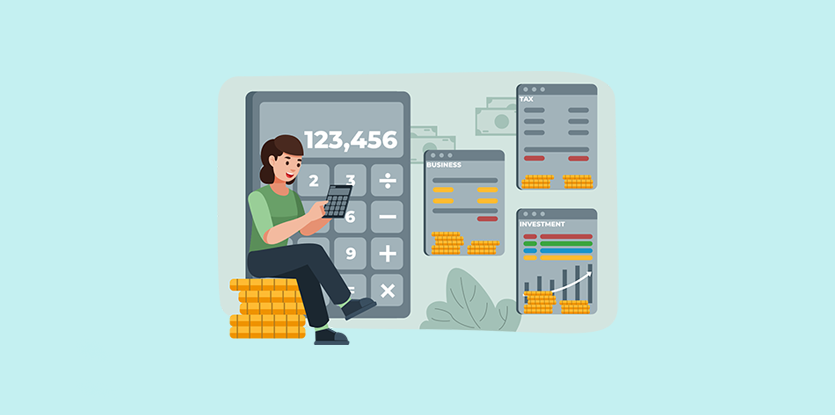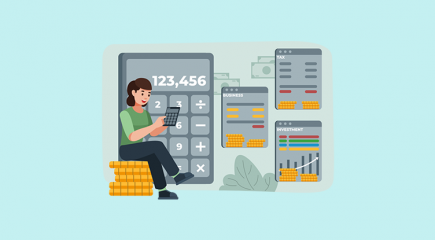The receivable turnover ratio or accounts receivable turnover ratio is among of activity ratios used to assess the ability of the business to convert accounts receivable into cash within a financial year.
Receivable Turnover Ratio Formula
Calculating the accounts receivable is done by taking the net credit sales, which is usually found on the company’s income statement, and dividing it by the average accounts receivables for a given period.
Accounts Receivable Turnover Ratio = Net Credit Sales / Average Accounts Receivable
Example
- A Company has net credit sales worth $200000 and $50000 worth of average accounts receivables. The account receivable ratio =$200000/$50000=4
The company with a turnover receivable of 4 is likely to get all its debts paid, hence less likely to suffer bad debts. The average accounts receivable turnover in days would be 365 / 4 or 89 days. A high receivable ratio means the company’s collection process is effective. A business receives payment for debts, increasing the business cash flow used to pay its debts, such as payroll promptly. The clients are paying off debts on time, creating room for future credit purchases.
The company deals with creditworthy customers, meaning no bad debts to be written off. A low accounts receivable ratio could also mean the business collection policies are not sufficient. The company may be very lenient with extending credit. If the customer to pay is struggling with their debts, they may not be the right customers.
Similarly, a low ratio can be a result lack of satisfaction on the customer’s side. It could be due to company errors, such as a product that needs to be replaced because of malfunctioning or shipping errors.
Limitations
It cannot help a company identify accounts that need extra review. It is more so for bad customer accounts that are past due. The ratio is mainly based on an average, which can easily be skewed by accounts that pay too slowly or quickly. Therefore, the ratio may not be the most accurate measure of your company’s credit effectiveness.
If the accounts receivable ratio is too high, it could mean the business mostly operates on a cash basis or the business’s credit policies are too strict. This can put off clients or lead to missing sales opportunities from clients with low credit levels. It will be prudent to reconsider the credit policies to increase sales for the year and bring about client satisfaction to avoid such scenarios.
Benefits of Receivable Turnover Ratio
It shows a company’s effectiveness and efficiency in extending credit and collecting from the debtors. The accounts receivable ratio shows how easily and how often the business collects cash from credit sales.
The accounts receivable ratio also denotes the quality of customers. A low ratio could mean the company is facing difficulties trying to collect the accounts receivables from clients. If non-credit worthy clients are allowed to purchase on credit, the accounts receivable balance showing on the balance sheet is misleading as the amount will never be collected in full.
The debtors might default, forcing the company to write off some of these receivables. The accounts receivables ratio helps investors to understand the actual value of receivables and the company’s liquidity. It allows them to estimate the amount to be collected and the rate at which the collection will occur.
How to Improve the Accounts Receivable Ratio
- Focus on consistency: Each invoice sent should be accurate, complete, and sent on time.
- Be flexible with discount and payment options: Offer discounts for cash sales or payments made ahead of time. It will help in reducing the accounts receivables while improving the rates of the receivable turnover. By offering a reasonable timeframe for payment, more customers will be attracted, hence increasing sales for the year and the likelihood of being paid in full and on time.
- Clear and consistent communication: Enforcement needs to be done on the policies set to ensure timely payments. The terms of payment should be detailed in all invoices, contracts, and customer communications.
- Invest in accounting software: These tools will ensure timely invoices, generate payment reminders, and invoices. They also streamline financial metrics and ensure customers get complete information.
- Avoid problematic clients: Clients who need to be pushed continuously to pay up will cause problems to your business and drag the receivable accounts down. It will be wise to work without them.
As one of the significant efficiency financial ratios, the accounts receivable assesses the business’s ability to use resources and assets. On a larger scale, the ratio shows how efficient a company is in using and managing the customer credit and how quickly it collects its average accounts receivable.
Get Our Free Options Trading Lessons
Finding a quality trading coach to guide you to options trading success doesn’t have to be complicated. Just 20 minutes a day, and you can learn the ins and outs of options trading. When you’re ready to take your portfolio to the next level, we can help you get there. Click here to get started now.


